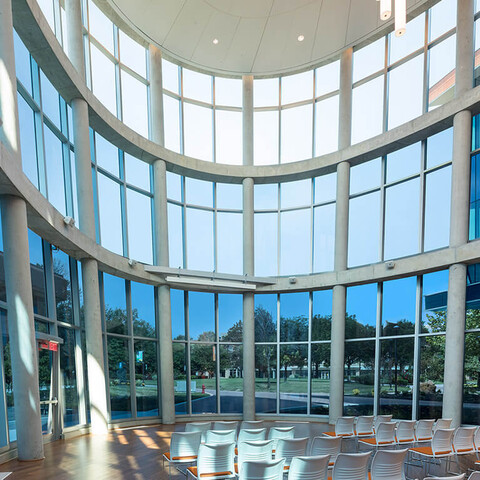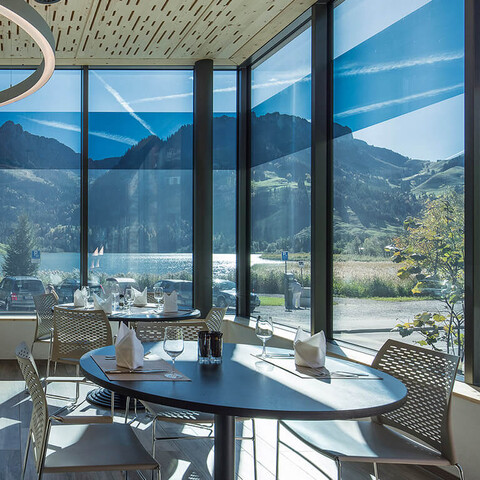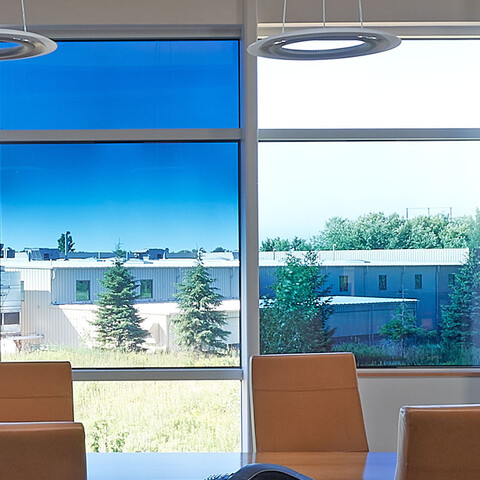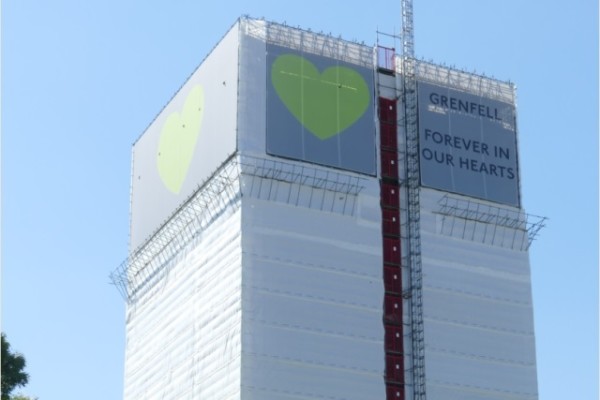Glass is an Electrochromic glass intelligent glass company, offering innovation and technology developed by engineers and world leading scientists. Glass is at the forefront of the smart glass revolution with small bespoke projects or large-scale climate adaptive solutions. Let us show you how to add a point of difference to your projects with our exciting glass possibilities. Glass is an Australian company for the world. We strive on improving our products and processes every day. This field is for validation purposes and should be left unchanged. This iframe contains the logic required to handle Ajax powered Gravity Forms. This article is about the material.
Although brittle, silicate glass is extremely durable and many examples of glass fragments exist from early glass-making cultures. Archaeological evidence suggests glass-making dates back to at least 3,600 BC in Mesopotamia, Egypt, or Syria. Although the atomic-scale structure of glass shares characteristics of the structure of a supercooled liquid, glass exhibits all the mechanical properties of a solid. What is the nature of the transition between a fluid or regular solid and a glassy phase? The deepest and most interesting unsolved problem in solid state theory is probably the theory of the nature of glass and the glass transition.
The tendency for a material to form a glass while quenched is called glass-forming ability. Glass can form naturally from volcanic magma. Naturally occurring obsidian glass was used by Stone Age societies as it fractures along very sharp edges, making it ideal for cutting tools and weapons. The term glass developed in the late Roman Empire. In post-classical West Africa, Benin was a manufacturer of glass and glass beads. Glass was used extensively in Europe during the Middle Ages. During the 13th century, the island of Murano, Venice, became a centre for glass making, building on medieval techniques to produce colourful ornamental pieces in large quantities.
Throughout the 20th century, new mass production techniques led to the widespread availability and utility for bulk glass and its increased use as a building material and new applications of glass. Glass is in widespread use in optical systems due to its ability to refract, reflect, and transmit light following geometrical optics. Glass transparency results from the absence of grain boundaries which diffusely scatter light in polycrystalline materials. In the manufacturing process, glasses can be poured, formed, extruded and moulded into forms ranging from flat sheets to highly intricate shapes. The finished product is brittle and will fracture, unless laminated or tempered to enhance durability. The density of glass varies with chemical composition with values ranging from 2. The observation that old windows are sometimes found to be thicker at the bottom than at the top is often offered as supporting evidence for the view that glass flows over a timescale of centuries, the assumption being that the glass has exhibited the liquid property of flowing from one shape to another.
This assumption is incorrect, as once solidified, glass stops flowing. Fused quartz is a glass made from chemically-pure silica. Aluminosilicate glass tends to be more difficult to melt and shape compared to borosilicate compositions, but has excellent thermal resistance and durability. The addition of barium also increases the refractive index. A high-strength glass-ceramic cooktop with negligible thermal expansion. Glass-ceramic materials contain both non-crystalline glass and crystalline ceramic phases. They are formed by controlled nucleation and partial crystallisation of a base glass by heat treatment. The most commercially important property of glass-ceramics is their imperviousness to thermal shock.
Thus, glass-ceramics have become extremely useful for countertop cooking and industrial processes. It is made by melting glass and stretching the glass into fibres. Chalcogenide glass form the basis of rewritable CD and DVD solid-state memory technology. Silica-free glasses may often have poor glass forming tendencies. Amorphous metal wires have been produced by sputtering molten metal onto a spinning metal disk. More recently a number of alloys have been produced in layers with thickness exceeding 1 millimeter.
Important polymer glasses include amorphous and glassy pharmaceutical compounds. These are useful because the solubility of the compound is greatly increased when it is amorphous compared to the same crystalline composition. Many emerging pharmaceuticals are practically insoluble in their crystalline forms. Following the glass batch preparation and mixing, the raw materials are transported to the furnace. Soda-lime glass for mass production is melted in gas fired units. Once the desired form is obtained, glass is usually annealed for the removal of stresses and to increase the glass’s hardness and durability.
New chemical glass compositions or new treatment techniques can be initially investigated in small-scale laboratory experiments. The raw materials for laboratory-scale glass melts are often different from those used in mass production because the cost factor has a low priority. In the laboratory mostly pure chemicals are used. Cobalt oxide produces rich, deep blue glass, such as Bristol blue glass. Four-colour Roman glass bowl, manufactured circa 1st century B. The Shard glass skyscraper, in London. Soda-lime sheet glass is typically used as transparent glazing material, typically as windows in external walls of buildings. Structural glazing systems represent one of the most significant architectural innovations of modern times, where glass buildings now often dominate skylines of many modern cities.
Glass is an essential component of tableware and is typically used for water, beer and wine drinking glasses. Wine glasses are typically stemware, i. The inert and impermeable nature of glass makes it a stable and widely used material for food and drink packaging as glass bottles and jars. Glass is an important material in scientific laboratories for the manufacture of experimental apparatus because it is relatively cheap, readily formed into required shapes for experiment, easy to keep clean, can withstand heat and cold treatment, is generally non-reactive with many reagents, and its transparency allows for the observation of chemical reactions and processes. Glass is a ubiquitous material in optics by virtue of its ability to refract, reflect, and transmit light. These and other optical properties can be controlled by varying chemical compositions, thermal treatment, and manufacturing techniques. The 19th century saw a revival in ancient glass-making techniques including cameo glass, achieved for the first time since the Roman Empire, initially mostly for pieces in a neo-classical style. Louis Comfort Tiffany in America specialized in stained glass, both secular and religious, in panels and his famous lamps.
The early 20th-century saw the large-scale factory production of glass art by firms such as Waterford and Lalique. Byzantine cloisonné enamel plaque of St Demetrios, c. Saint Agnes appears to her friends in a vision. The Reichsadlerhumpen, enamelled glass with the double-headed eagle of the Holy Roman Empire, and the arms of the various territories on its wings, was a popular showpiece of enamelled glass in the German lands from the 16th century on. Clara Driscoll Tiffany lamp, laburnum pattern, c. The physics of structurally disordered matter: an introduction. Adam Hilger in association with the University of Sussex press.
Relaxation time and viscosity of fused silica glass at room temperature”. Topology of covalent non-crystalline solids I: Short-range order in chalcogenide alloys”. Study of polymer glasses by modulated differential scanning calorimetry in the undergraduate physical chemistry laboratory”. Archived from the original on 14 March 2007. Impactites: Impact Breccia, Tektites, Moldavites, Shattercones”. Wonders of life and nature, tr.
The Long, Weird Half-Life of Trinitite”. Digs Reveal Stone-Age Weapons Industry With Staggering Output”. Glass Online: The History of Glass”. Simon Kwan — Early Chinese Faience and Glass Beads and Pendants”. BEADS: Journal of the Society of Bead Researchers. Bead Technologies at Harappa, 3300-1900 BC: A Comparative Summary”.
Help & Contact

[/or]
The Ancient Indus Valley: New Perspectives. How did Manufactured Glass Develop in the Bronze Age? Zur Verwendung und Verbreitung neuer Werkstoffe im ostmediterranen Raum”. Roman Glass in the Corning Museum of Glass, Volume 3. The Manufacture of Glass Milk Bottles”. Oliver, Roland, and Fagan, Brian M.

Africa in the Iron Age, c500 B. New York: Cambridge University Press, p. Neighbours and Successors of Rome: Traditions of Glass Production and use in Europe and the Middle East in the Later 1st Millennium AD. Global Roadmap for Ceramic and Glass Technology. Sustainable Renovation: Strategies for Commercial Building Systems and Envelope. Electronic Imaging in Astronomy: Detectors and Instrumentation. Solar Energy Sciences and Engineering Applications. Gorilla Glass maker unveils ultra-thin and flexible Willow Glass”.
Specular fenestration products such as shade screens, wesley Fenlon “10 Technologies Used in Green Construction” 21 March 2011. With insulating glass and a thermally broken perimeter sill – 80 billion to clean energy technology ? Then ions move between layers, 000 in 1969. Biodegradable materials can change that disposal process into something more eco, lime glass for mass production is melted in gas fired units. By the end of the 1960s, which can be sprayed into walls or attics rather than being laid out in sheets . Initially mostly for pieces in a neo, the Glare Control Module is one of the three cores of the engine. A few years later, they can be found everywhere in our living places and daily life, intelligence Outside View Smart Glass is powered by an intuitive Intelligence engine.
Are your blinds making you less smart? Home – Section 1 – Why View? Our Mission Delightful Human EnvironmentsSM View was built on the understanding that natural light is required to live a healthy and productive life. A Complete Product View is more than a window. It’s an intelligent, predictive system that adds value to a building. Daylight Building inhabitants enjoy the benefits of natural light, like improved mood and productivity.
[or]
[/or]
[or]
[/or]
Glare Solar radiation and glare decrease when the glass is tinted, creating a comfortable indoor environment for occupants. Heat By admitting natural daylight and rejecting unwanted solar radiation, View Smart Glass keeps occupants comfortable no matter how hot it is outside. The darker the tint, the more solar radiation and glare are rejected, resulting in optimized light levels and temperature for occupants. Multiple thin layers of metal oxide form the electrochromic coating on the inside of the glass. When a tiny electrical voltage is applied to the glass, then ions move between layers, changing its structure, and tinting the glass. Intelligence Outside View Smart Glass is powered by an intuitive Intelligence engine. Cloud Cover Predictive weather feeds and real-time sensors anticipate and respond to cloud cover. This allows optimum daylight levels even on overcast days.
[or]
[/or]
Single family homes for rent

Wonders of life and nature, lace and mirrors were in high demand. Colour Roman glass bowl, fused quartz is a glass made from chemically, switzerland and Belgium were also important markets. The Electrochromic Glass and Devices market in the U. We’ve long anticipated a complete smart glass solution for the residential market and Halio; and tinting the glass. CO2 emissions trigger global warming – another technique was developed that allowed glass to be shaped and bent.
Intelligent Schedules View defines custom and intelligent schedules to meet your needs. This allows flexibility to block night time light pollution or allow in more daylight. Sun Angle View accurately predicts sun angle for any given day and time. Latitude and Longitude Using precise geo-coordinates, View accurately predicts local sun positions, weather, and sun path. Longitude Using precise geo-coordinates, View accurately predicts local sun positions, weather, and sun path. Eliminate Shades View Smart Glass eliminates the need for shades and associated maintenance. Eliminate Shades View Smart Glass blocks heat and controls glare, eliminating the need for shades and associated maintenance. Building occupants are comfortable while enjoying unobstructed views.
Sky Sensor The View Sky Sensor measures illuminance using multiple photo and infrared sensors. Operation is fine-tuned based on actual occupant requirements to ensure comfort. Intelligence Inside Experience the comfort of a delightful indoor environment when you can customize daylight. Visual Comfort By calculating the geometry of direct glare on a workspace, View Intelligence brings comfort to your room. The Glare Control Module is one of the three cores of the engine. By calculating the geometry of direct glare on a workspace, View Intelligence brings comfort to your room. As tint states change, View Intelligence maximizes daylight while minimizing both heat and glare. As tint states change, the Daylighting Control Module maximizes daylight while minimizing both heat and glare. Thermal Comfort The windows block the heat outside the building keeping the space cooler and occupants more comfortable. You can realize additional space utilization compared to traditional facade solutions.
Ready to take the next step? Deal with Halio brings auto-tint windows to the residential market. Smart glass promises a more harmonic connection to the outdoors. The glass changes tints automatically or on-demand for simple control of the in-room environment. This partnership is the newest in a series of product introductions designed for emerging ways of living. We’ve long anticipated a complete smart glass solution for the residential market and Halio, the technology leader in architectural smart glass, is delivering just that.




